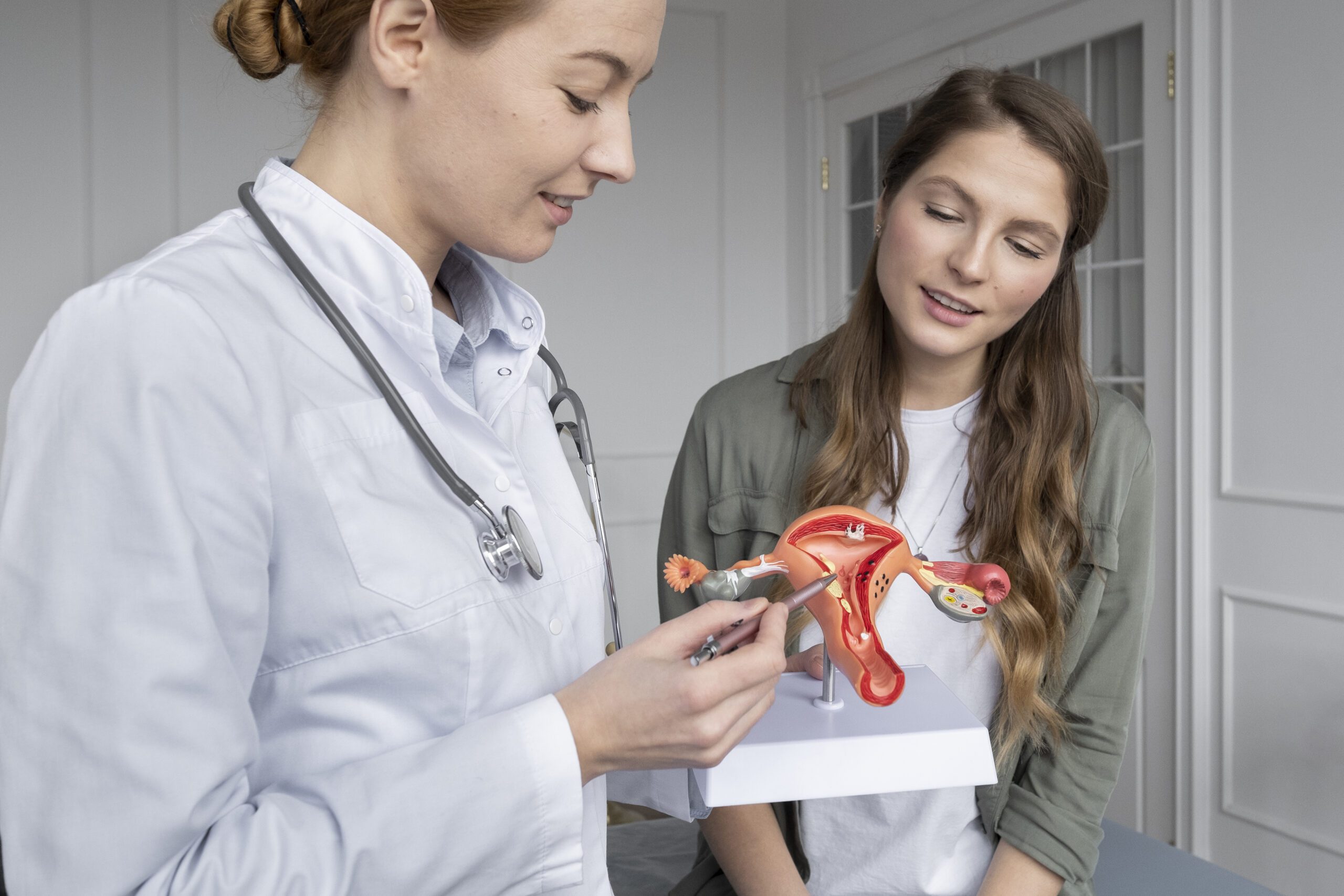Fibroids
- Home
- / Gynaecology
- / Fibroids
Fibroids in the Uterus:
The fibroid uterus is the most common non-cancer growth or tumour in women.
They are benign growths from the muscle layer of the uterus. They are also called leiomyomas or myomas. Fibroids can bulge towards the inside or outside of the uterine cavity, leading to a large or increased size of the uterus.
The different types of fibroids are broadly classified as:
• Intramural fibroids: These fibroids develop in the muscular wall of the uterus.
• Submucosal fibroids: These fibroids bulge into the uterine cavity.
• Subserosal fibroids: These are the most common fibroids. They can grow from the outer part of the uterus into the pelvis.
The exact cause of fibroids occurring in the uterus is unknown. However, it is suggested that the female hormones oestrogen and progesterone seem to help fibroids grow. These hormones normally act on the lining inside the uterus (endometrium) to thicken during each menstrual cycle to prepare for pregnancy. Conditions leading to unopposed or prolonged oestrogen exposure are known to cause fibroids. Genetics also plays a role in causing fibroids.
Symptoms: Not all fibroids cause symptoms, but when they do, symptoms can include
• heavy menstrual bleeding.
• belly or back pain.
• Frequent urination
• pain during sex.
• Discomfort in the rectum
Factors of risk:
A few factors that can raise the risk of getting uterine fibroids include:
• Age (older women are at higher risk)
• Getting your period at a young age
• Obesity
• No history of pregnancy (nulligravida)
• Vitamin D deficiency
• Family history
• Uterine fibroids may be suspected just from feeling the uterus enlarged during a routine pelvic exam. If the shape of your uterus feels irregular or unusually large, further tests may be ordered, such as:
• Ultrasound: Ultrasounds use sound waves to take images of the uterus to ascertain the presence of fibroids and assess their location and size if present.
• Magnetic resonance imaging (MRI): If more information is needed after you have an ultrasound, you may also have an MRI. MRIs show more detailed images of fibroids with respect to location and can help doctors decide the best treatment.
Treatment of Fibroid Uterus:
There are many ways to treat fibroids. The treatment that works best for you will depend on your age, symptoms, your desire to get pregnant, and the location and size of the fibroid.
1) Watchful waiting with regular follow-up: If you have only mild symptoms or no symptoms, we suggest you simply wait with a yearly follow-up to note any increase in the size of the fibroids.
Fibroids are not cancerous, and they grow slowly. They may shrink or go away after menopause.
2) Medications. Medications for fibroids treat your symptoms. Fibroids won’t go away, but they might shrink with some medications. They can also help with symptoms like pain and bleeding.
These include non-hormonal medications to control bleeding, birth control pills, and nonsteroidal anti-inflammatory medications to ease pain. Hormone-suppressing injections and medications can be considered for temporary relief from symptoms. Iron supplements can help with energy if you’re bleeding heavily and have anaemia as a result. Other medications include:
3) Surgery. If you have moderate or severe symptoms, are considering pregnancy, or have a huge fibroid, you may need surgery for relief. Options include:
• Myomectomy: This surgery removes only the fibroids, leaving behind the uterus. This might be your best option if you hope to become pregnant in the future. Myomectomy can be done through laparoscopy (keyhole surgery done through one or more small cuts instead of one large one) or hysteroscopy based on the location of the fibroid.
•Hysterectomy. This surgery removes your uterus completely. It is a major surgery done laparoscopically. Ovaries are usually preserved. Laparoscopic hysterectomy ensures faster recovery, less blood loss, a shorter hospital stay, and minimal pain compared to open surgery.
• Uterine artery embolisation (UAE). In this procedure, blood flow to your fibroids is blocked by inserting gel or plastic particles into the nearby blood vessels. This makes the fibroids shrink, thereby reducing symptoms.


